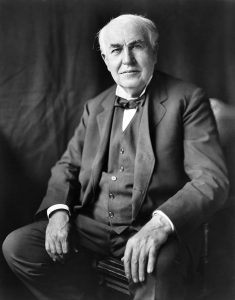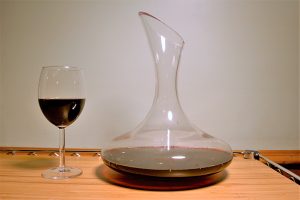Newspaper readers and online followers know of my advocacy of decanting—pouring wine into a vessel to expose it to air to soften tannins and encourage wine to “open up” and become more balanced.
Same time, decanting is not a panacea for flawed wines, often is unnecessary, and potentially can harm some wines. So, what is a wine drinker to do?
Think of the inveterate inventor Thomas Edison. The holder of 1,093 patents had an unusual method of evaluating potential employees. He presented soup to the job applicant.
Edison carefully observed when soup was served as part of a larger meal. If the job seeker immediately applied salt and pepper, he was rejected. If he tasted the soup first, he had an employment chance.

Edison reasoned he did not want employees who relied on assumptions and preconceived notions. Edison believed a lack of curiosity and an unwillingness to ask questions and test a situation was not the trait of an inventor. How could you know if seasoning was needed if you had not first tasted the soup?
And so it goes with wine and decanting. Pull the cork or twist off the cap, pour, give it a swirl, smell, and taste. If it is a little tight and tannic, give it some more swirls and a few minutes in the glass. If the wine still has not come around, pour the wine into a decanter and let oxidation do its thing.
The majority of the value and mid-level wines you drink do not need to be decanted. If you buy multiples of the same bottle or have certain go-to wines you drink regularly, you likely know before opening which wines are fine on pop-and-pour and which benefit from decanting, especially if you experimented.
Older wines may benefit from decanting to avoid gritty sediment in the glass, but such wines do not fare well with prolonged exposure to air. Decant and drink them right away.
Decanting can do wonders for wine when needed. It is unnecessary when not needed.
Tasting notes:
• Plungerhead Old Vine Zinfandel, Lodi 2018: Profusion of ripe red fruits, 16% of which is parade of non-zin that gives this unexpected depth and complexity. $13-15 Link to my review
• Sanford Rosé of Pinot Noir, Sta. Rita Hills 2020: Easy-drinking, red-fruit-forward, tasty, bright. $20-$22 Link to my review
Last round: What do you call a group of men waiting in line for a haircut? A barberqueue. Wine time.


